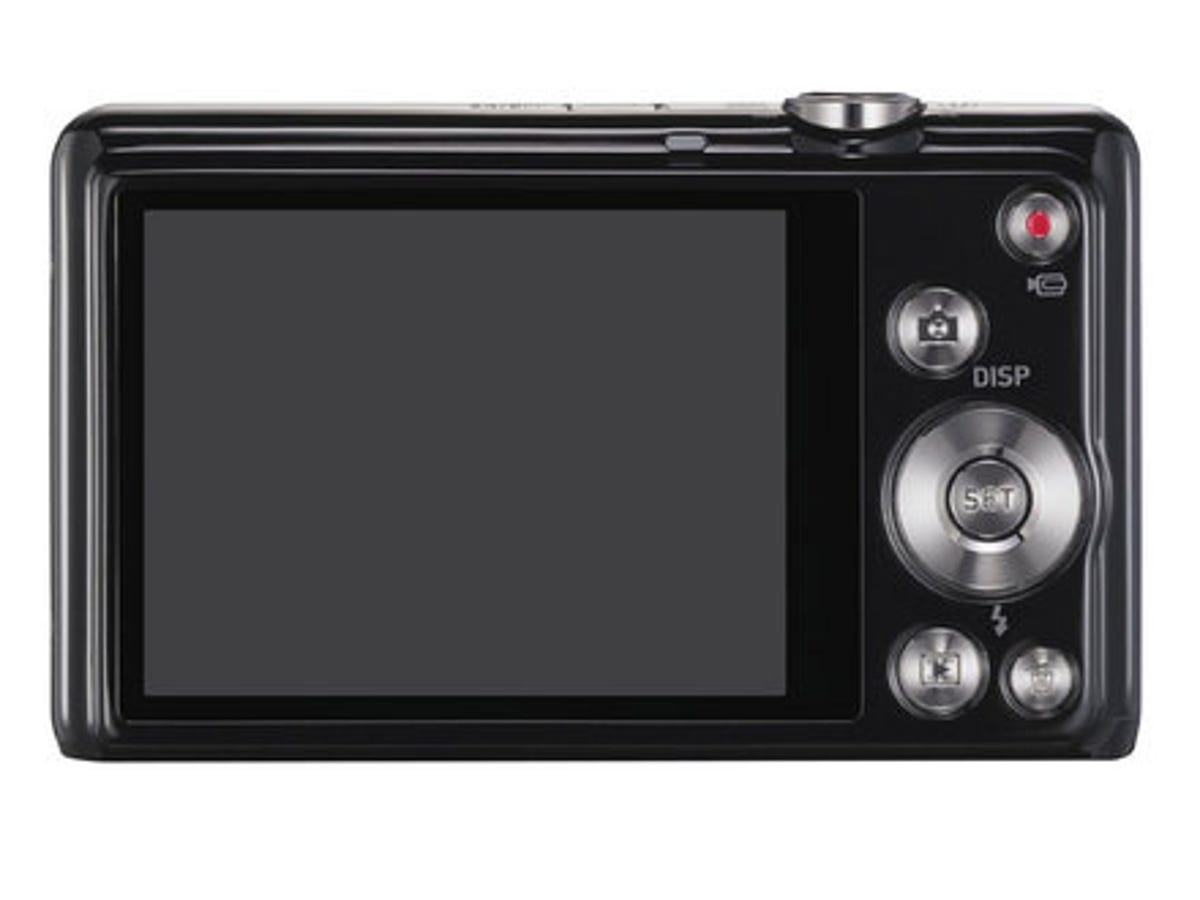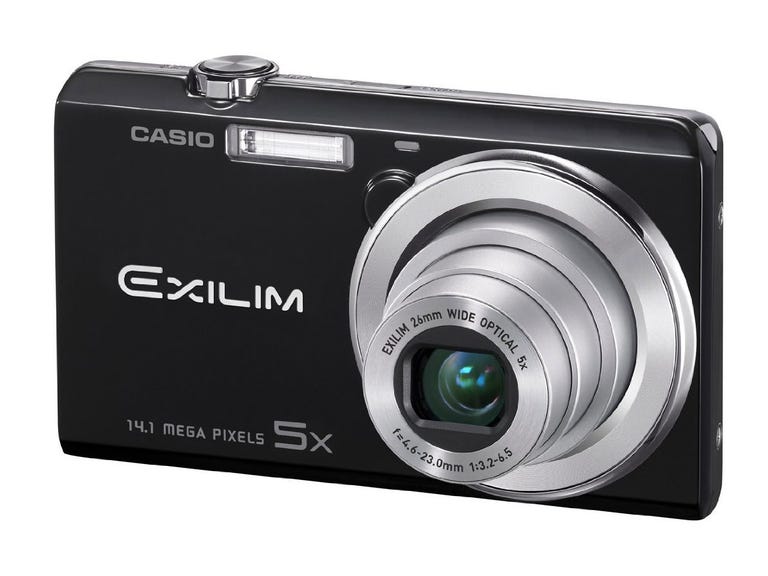 Why You Can Trust CNET
Why You Can Trust CNET Casio Exilim EX-ZS10 review: Casio Exilim EX-ZS10
£90 really is very little to pay for such impressive specs. It has some some shortcomings, but the ZS10 is a great carry-anywhere snapper.
At £90, this super-svelte snapper is little short of a bargain. A 14.1-megapixel sensor, 5x optical zoom and the promise of HD movie recording sounds too almost good to be true.
The Good
The Bad
The Bottom Line
Naturally we were eager to get our hands on the Casio Exilim EX-ZS10 and find out whether it lived up to our expectations, or embodied the maxim 'you get what you pay for'. It turns out it was a bit of both.
Shooting movies
First up we'll look at the ZS10's movie mode. It has two quality settings -- 640x480 and 1,280x720 pixels, each at 30 frames per second. We opted for the latter. The ZS10 won't film anything longer than 29 minutes, regardless of spare capacity on your memory card, so bear this in mind of you plan on filming a graduation, nativity play or other crucial event. There's no such limit on audio-only recordings. Let's see how the footage turned out.
Our chosen resolution may well have matched HD, but the results didn't live up to our expectations. Static shots demonstrated 'movement' across flat surfaces, even in good light, where the camera applied some tight compression. And to get around the problem of the loud zoom action, which might otherwise have featured on the soundtrack, Casio has disabled the optical zoom, leaving you only the digital option. So, the further you zoom, the more you degrade your captured scene.
The digital zoom isn't smooth, either, stepping rather than sliding from one level to the next. The result is a jumpy progression from a grainy wide angle to a rough narrow focus. Casio recommends setting the zoom before you commence filming, and while this certainly gets around the problem, it does so at the cost of flexibility.
Sadly, then, we can't recommend the ZS10 for anything but casual filming for personal use or uploading to video-sharing sites.
Shooting photos
Switch it on and the ZS10 doubles in size. The lens pops out well beyond the body to deliver a 5x optical zoom, equivalent to 26–130mm in a 35mm camera, backed up by a 4x digital zoom to take the total magnification to 20x. The motor behind the optical half of this equation is far from discreet, though, so try and take a picture during a wedding and you're sure to get nasty looks from the aunties.
The digital zoom is neatly implemented when zooming in: the on-screen scale is notched where optical ends and digital begins. Digital zoom relies on cropping and enlarging a central portion of your image, which impacts quality, so to pass this point you must briefly release the rocker and then pull it a second time to continue. That's both logical and welcome, but implementing the same control when zooming back out is an over-cautious hindrance.
If you're willing to compromise on image size you can employ the digital zoom without impacting quality. Drop to 6 megapixels and you can safely zoom to 7.7x. Take it as low as VGA and you'll reach 33.8x, but seriously restrict your options when it comes to later cropping the results. The maximum zoom, with both digital and optical combined, is an unrealistic 79.7x.
In-built facial recognition -- now fairly common in budget cameras -- is well handled. The Exilim overlays a box around the eyes, nose and mouth of your subjects and follows their movement about the screen, keeping them sharp and well exposed. There are limits to its abilities, though, and Casio warns that sunglasses and hats will fox it, so bear this in mind for holiday shots or when fixing on subjects with polarising glasses.

Handling
Access to the battery and media card is through a door on the underside, which will be a problem if you've fixed it to your tripod. With the mount screw right by the hinge you'll have to unscrew it every time you need to change the card or replace the battery. Charging takes 1 hour 50 minutes from the main, and 20 minutes longer via USB.
The internal memory runs to 14MB, which is good for only three shots at the highest resolution, so don't rely on that to help you out. SD, SDHC and SDXC cards are all supported.
Casio's menus are well thought-out, with the ZS10's options explained in plain English. Scroll through its resolutions and each is accompanied by a suggested use. 14 megapixels is ripe for poster printing, 16:9 for display on a widescreen TV, 6 megapixels for A4 prints and so on. While it's true that 3 megapixels will be plenty for printing at 3.5 by 5 inches, though, no attempt it made to explain that shooting at this resolution seriously impacts flexibility and what you can do with your images later.
There's a dedicated easy mode that strips down the number of options and the length of the menus, but while this expands on the help offered for the most basic functions, it's still easy to stray into unknown territory where you're asked to choose between, say, lighting on or off, and the same for Eye-Fi, with no explanation of what they mean without referring back to the manual.
It also, disappointingly, takes away the Best Shot options. Best Shot is what Casio calls scene modes -- presets tailored to particular image types such as portraits, pets or food. There's an auction setting for eBay addicts, an anti-shake feature and both voice recording and YouTube-optimised video. There's a text mode for shooting documents, but we got better results by leaving everything set to auto. While text mode knocked up the contrast it left us with thinner, less legible characters.
The controls are well laid out. Despite the 2.7-inch display dominating the back of the body, the controls to its side are still large enough for clumsy fingers to work with ease. You can assign your choice of EV shift, white balance, ISO or self timer to the left and right sides of the four-way rocker.
The regular 2- and 10-second timer options are supplemented by a smart 3x feature, which waits 10 seconds and then takes a trio of shots at 3-second intervals.
Image quality
Focus fell off at the extremities in our still-life test, and when shot using only ambient light, the Exilim increased its sensitivity to ISO 400, which introduced more grain than we considered acceptable. Both the studio-lit and on-camera flash versions of the same scene were exposed at ISO 100, and although the flash coped well with matte surfaces such as the pages of our book and the fabric doorstop, detail was burnt out on reflective white surfaces, such as the plug.
Grain will be an issue for the more ambitious user, as they'll find themselves falling back on higher ISO settings, perhaps supplemented by exposure compensation, to make up for the fairly unambitious 4-second limit on long exposures. Sensitivity runs from ISO 64 to ISO 1,600 with -/+2EV compensation in 1/3EV steps. The ZS10's widest aperture is a fairly respectable f3.2, narrowing to f8.0.
There are six white-balance options, including the usual tungsten, fluorescent, daylight and shadow, supplemented by a neat manual option clearly devised with beginners in mind. To avoid presenting you with a Kelvin scale it simply requires a shot of white paper in your current lighting conditions.
There are four focus modes, including manual and macro. Macro performance is poor, though, getting you no closer to your subject than 10cm. This leaves plenty of the surrounding area in the frame, but does at least achieve a fall-off in the focus beyond the 10cm point, shortening the depth of field as we would have expected.
Portraits were extremely well handled, with particularly realistic skin tones under studio conditions. The Exilim also made good use of the low ambient light in our test environment to produce a balanced if slightly warm result when its flash was suppressed. When the did flash fire, the result demonstrated well rendered detail and not excessive reflection from the skin highlights.
Moving outside, the results were more mixed. Skies were smooth and evenly gradated across areas of similar tone, but where overlaid by branches there was evidence of chromatic aberration. This was more marked when shooting black against a bright sky, as can be seen in this image of burnt window frames, which shows considerable purple fringing.
Detail was lost in some very bright areas where highlights overwhelmed the shadows in areas of high detail, despite the camera dialling down its sensitivity to ISO 100. In other scenes, with an even balance of bright sky and a darker foreground, the sky could sometimes lack vibrancy, even with the sun kept behind the shooting position.
Conclusion
The ZS10's greatest asset is certainly its size. It's perfect for slipping into a pocket, and great for bloggers who want to capture spur of the moment events. Beginners, too, will be well suited by its Best Shot options, and for such users, much of our criticism may be irrelevant.
The ZS10 is fun to use and the images it produces good in many situations, but not all. Fortunately this is reflected in the £90 pricetag, and in that respect we're willing to cut it considerable slack.
If all-round great performance and high quality video are what you're after, though, check out the EX-ZR10, reviewed back in February and available now for under £150. The sensor packs a slightly lower resolution, but the optical zoom stretches to 7x and it also shoots 1080p HD video.
Edited by Nick Hide


